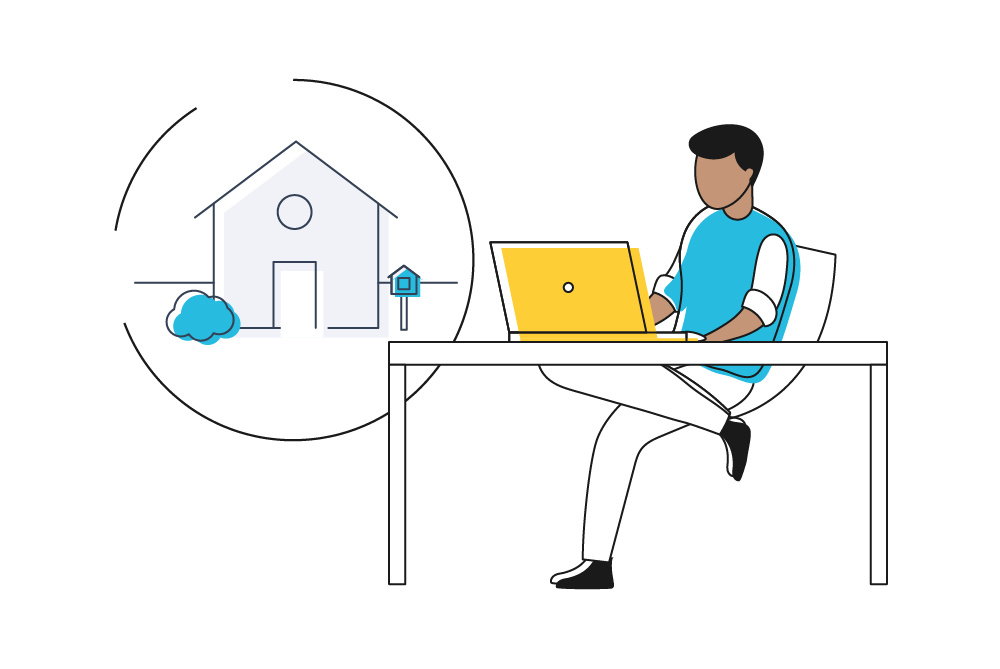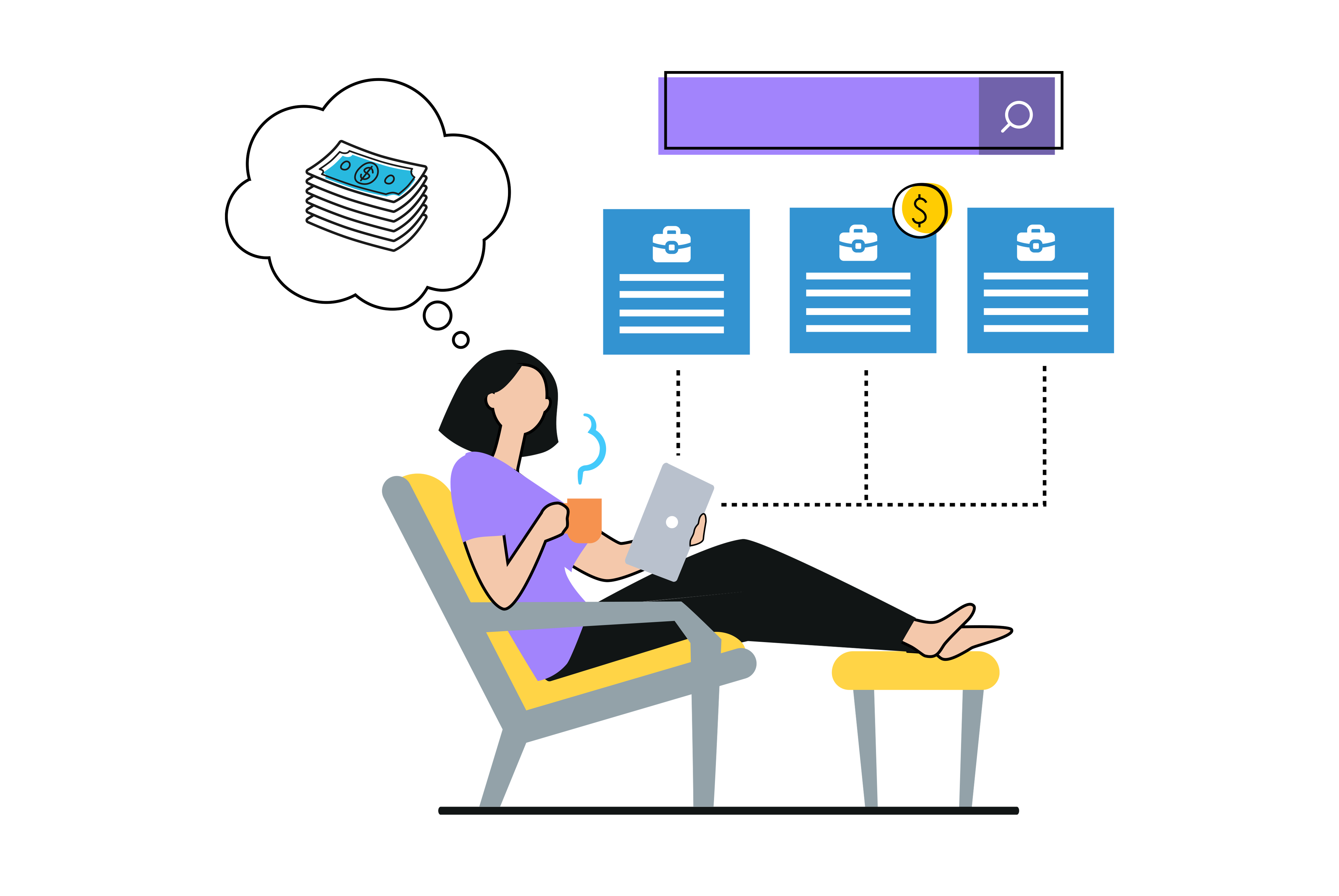Finding a job where you can work from home — either some or all of the time — is a must-have for a growing number of job seekers. If you love being home or the idea that your “office” can be just about anywhere with Wi-Fi, then you probably find the idea of remote work appealing. And yet the search for legitimate remote work opportunities includes far more pitfalls and potential scams than traditional job listings. In fact, some research suggests there are up to 70 scams or fraudulent postings for every legitimate remote job opportunity.
Job hunting in this environment means that learning to spot fake or questionable listings is a must. Here are four ways to avoid falling for fakes and become a savvy searcher on your hunt for legitimate work from home job opportunities.
It’s easy to get excited about a great-looking remote work opportunity, especially if you’ve been dying to find a way to work from the comfort of your home office. However, scammers often prey on our emotions, banking on the fact that when we get excited about something, we’re less likely to slow down and question what’s going on.
No matter how much you’ve been dreaming of working from home, remember to carefully read every listing. Look beyond the big, bold claims. Question every promise that a listing makes.
Staying level-headed and doing your due diligence will save you from wasting your time running down a job that isn’t real. Researching the companies who post these jobs is an effective way to weed through questionable listings. Check out their websites and look for easy-to-find contact information, such as email addresses or a phone number.
Scammers will generally make contact information difficult to find because they don’t want you to contact them. They want you to fall for the fake posting and follow its directions.
The biggest weapon you can bring to the table when looking for a legitimate remote work opportunity is an informed perspective. This means familiarizing yourself with typical fraudulent job posting features and characteristics:
- Poorly composed listings. Strange wording, bad grammar, spelling errors, and confusing sentence structure are all common in fake job postings. If your first pass through a listing makes you say, “Huh?” and forces you to reread it to try to make sense of it, then this is probably a scam.
- Promises, promises. Anything that sounds like a promise to “get rich quick” is most likely a hoax. Scammers make these promises to lure you in so that you don’t stop to ask questions. Postings from real employers will focus on the position available and its duties, as well as compensation. So, if a listing seems too good to be true, you can bet it probably isn’t true.
- Wonky websites. Scammers sometimes clone their websites from those of legitimate companies. But because they aren’t a real employer, those websites are still going to feel a little sketchy. If the site isn’t much more than a single landing page, you can’t find further contact information, or it just feels strange in any way, trust that feeling. You could be dealing with a fake.
- Generic email addresses. Real employers have email addresses that often incorporate their names and the name of their companies. Scam postings are more likely to have generic email addresses ending in @gmail.com or @yahoo.com, which are easy for anyone to create. When in doubt, do an internet search of the email address. You may find reports of scams already associated with it.
- You’re asked for money or your personal information. You should never pay money to apply for a job, whether it is a traditional or a remote work opportunity. An employer won’t need your personal information, including your Social Security number, until you’ve been hired and they need to enter you into their payroll system. Scammers, on the other hand, want to get that information as soon as possible.
The purpose of any job listing, including remote work applications, is for a company to find candidates to fill open positions. Real employers will avoid wasting their time by being clear and direct about what they need. Knowing what a real job listing looks like ensures you won’t be wasting your time either. Every legitimate remote work job posting will contain most, if not all, of the following:
- A full description of the position. Scams will spend a lot of time talking about money-making opportunities rather than the duties a candidate will be expected to perform. They also often put a limit on the time frame in which you have to apply to create a scarcity mindset, making you think you have to apply now or you’ll miss out. Legitimate remote work employers will explain what they need, whether you need to live within a certain geographical area, if the position is fully or partially remote, and more. Scammers will rush you. Legitimate employers want you to have all the facts you need before committing to the role.
- You’ll know who’s hiring. Real employers display their names at the top of their listings and often in the job description, as well. They want candidates to be able to research their company, read reviews, and determine if they’re a good fit. This is the kind of transparency you want to see.
- Real emails and websites. Legitimate companies have websites that look and feel real. Look for a regularly updated blog, an “About Us” page, customer testimonials, and contact information. Don’t be afraid to use the internet to research a website, email address, or phone number.
- Keep your wallet closed. A real remote work job posting won’t ask you to pay an application fee, insist that you’ll need to buy your supplies, or make any investment in this “money-making opportunity.” Legitimate postings will list position and compensation details and how to apply. It should be as simple as that.
- Clarity, not confusion. Scroll through enough job postings, and you’ll begin to get a sense of the general outline that real listings follow. The answers to who, what, when, where, and how should be easy to find, and the text should be relatively error-free. The occasional typo is one thing, but a real job opportunity won’t make you read through it several times to understand what’s being offered.
When reading a remote work job posting, ask yourself, “If this was for an in-office position, would this seem normal?” Just because you’ll be working from home doesn’t mean you won’t actually have to work. A legitimate job posting should reflect this expectation. It will list the general duties of the position and the requirements applicants must meet to be considered.
Scammers like to appeal to as large an audience as possible, so scam postings will include promises like not needing any experience to make money or being able to make an unusually large amount of money right away.
Questioning each part of a listing, asking if it feels or sounds normal, is a good habit to cultivate. Train your brain to spot the telltale signs of real and fake job listings, so you can weed out scams and frauds while looking for your next new job.
At Joblist, we want to help you find that perfect job. We offer millions of legitimate job postings and tools to help you hunt for the -right position. Don’t waste your time on scams or endless scrolling. Our customizable search option and daily alerts mean you’ll find a better job sooner. As remote work grows in popularity, every job seeker deserves the skills to search smarter and safer. You want to level up? Let us help you get there.






